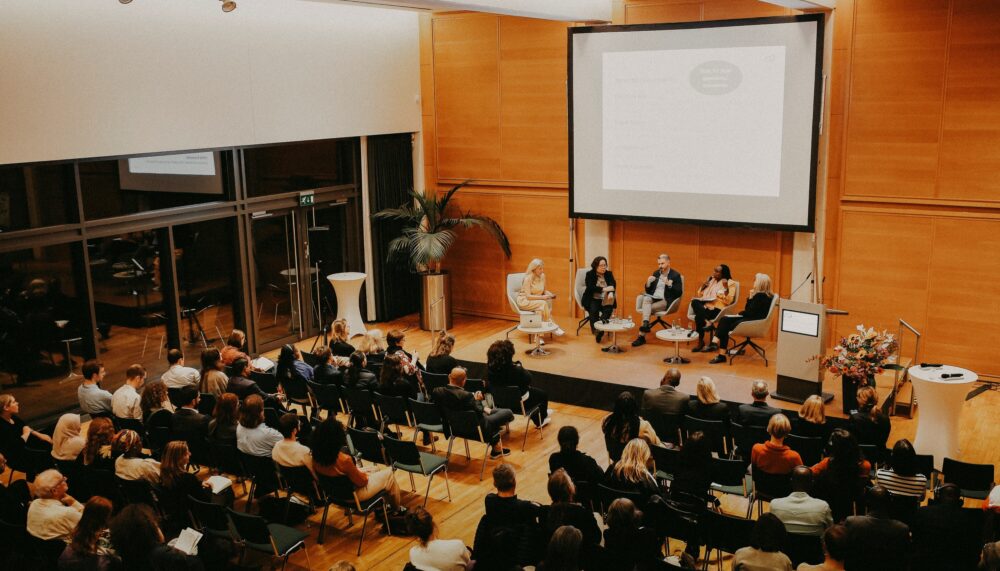BLOG POST | 16 Apr 2024
What can we do to ensure wars will end again at the negotiating table?

From The Berlin Moot, read why new tools and approaches to peacemaking are needed so that more conflicts can be resolved at the negotiating table.
By Isabel Kleitsch
Slobodan Milošević, Franjo Tuđman and Alija Izetbegović sign the Dayton Agreement. Bertie Ahern, Tony Blair and George Mitchell proudly present the Good Friday Agreement to the press. A white rose laid down on the peace monument in Guatemala City commemorating the end of a 36-year-long civil.
All these moments are iconic images of peacemaking. Yet they seem to be a relic of a distant past. The number of current conflicts is at its highest since the end of the Second World War. Peace agreements that manage to achieve sustainable peace have become a rare exception.
Instead we see conflicts dragging on for years like in Syria or Yemen with a plethora of mediation actors trying to bring parties together – at times complementing each other’s efforts while at others competing for attention. We see agreements failing over and over again like in South Sudan. We also see conflicts ending through military victory, such as the Taliban in Afghanistan or the Azerbaijani military taking over Nagorno-Karabakh after displacing tens of thousands of Armenians.
What makes conflicts that have been brought to an end at the negotiation table stand out?
Yet there are exceptions to all these negative examples. A number of conflicts over the past decade have been brought to an end at the negotiation table, such as in Colombia, the Philippines or Mozambique. What makes them stand out? These conflicts, in which an armed resistance movement was fighting a central government, can be categorised as “classic” civil-war-type conflicts from the Cold War era. We do not see this type of conflict very often anymore. (That said, we should of course by no means underestimate the hard work of the negotiators and the progress that was made in brokering these agreements, for example in terms of including the voices of women and victims in the negotiations, or incorporating monitoring provisions to ensure compliance with and implementation of agreements.)
Conflicts have become more complex, but also peacemakers have changed.
Since the turn of the millennium, the vast majority of conflicts have become much more complex, and the variety of conflict actors pose unfamiliar challenges to peacemakers. Extremist or terrorist groups like the Islamic State or Boko Haram base their demands on religiously or ideologically framed divides making them essentially non-negotiable. Regional and middle powers compete indirectly and sometimes even directly on the battlefield in proxy wars as we have seen in Libya or Yemen. Geopolitical rivalries have increased dramatically making traditional peace and security bodies like the UN Security Council ineffective. Cyber warfare, mis- and disinformation as well as competitions in space add to this conundrum.
But it is not only the wars that have changed, peacemakers have too. Liberal Western democracies, who used to be the classical peacemakers of the 1990s, seem to have shifted their focus, among other things, to the fight against terrorism and the prevention of atrocities – at least through legal means. Countries, such as Qatar, are emerging as important players in the field.
New tools, methods, and approaches to peacemaking are needed so that conflicts can once again be resolved at the negotiating table. On 17 and 18 April, peacemakers, diplomats, and mediators from around the world came together at THE BERLIN MOOT. They are mandated by governments, international or regional organisations, represent religious groups, or civil society to further peace efforts in some of the many conflicts the world is witnessing today.
They are all driven by one common question: what can we do to ensure wars will end again at the negotiating table?
Watch our livestreamed panels.
Media contact
You can reach the press team at:
+49 (0) 177 7052758
email hidden; JavaScript is required


